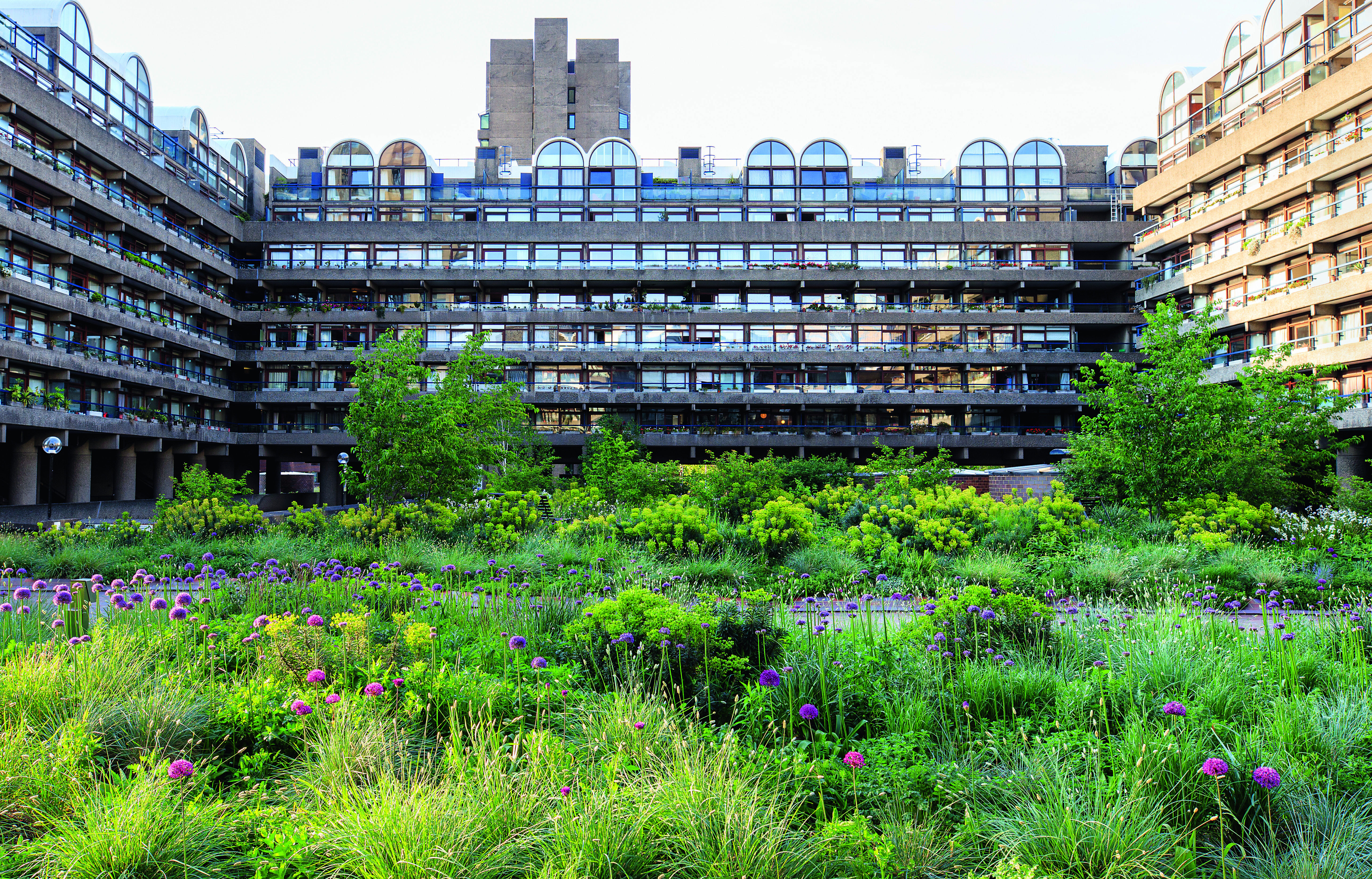
Go wild and brutal in the garden with Nigel Dunnett
Discover how this academic-turned-landscaper turned London’s best-loved Brutalist development into an unlikely wild paradise
Where would you go to see a great meadow in Great Britain? Chances are you wouldn’t try the Barbican, the mid-century Brutalist apartment block near the centre of London, which has long been admired by architecture and design enthusiasts, but a little ignored by horticulturalists.
However, this concrete complex began to draw admiring glances from plantsmen and women a few years ago, as the author and garden expert Noel Kingsbury explains in his new book, Wild: The Naturalistic Garden, a beautiful, deeply engaging survey of some of the best naturally inspired gardens currently thriving across the world.
Kingsbury details how the Barbican’s garden had been fairly unremarkable up until 2015, when its stressed shrubs were replaced with “for want of a better word, meadows,” writes Kingsbury, “diverse plantings of grasses and perennials over 1,600 square metres (0.4 acre).
“There is a lot of grey foliage – to be expected, perhaps, as the soil depth here is limited – and there is no irrigation, so drought-tolerant plants, which often have foliage made grey or silver in appearance owing to coatings of microscopic protective hairs, tend to predominate. This is, in effect, green roof planting, with a soil depth of around 35 centimetres (14 in).”
Who is responsible for this unlikely flourishing? An academic also experiencing something of a flowering. “The Barbican plantings have become one of the best-known works by Professor Nigel Dunnett, whose academic career in the Landscape Department at the University of Sheffield has taken a more practically orientated turn,” the book goes on to say. “Dunnett focused on summer drought as the main issue in selecting plants, but as with so many ecologically orientated designers, he thought first of an appropriate reference habitat – in this case, the steppe grasslands of eastern Europe and Central Asia.
“Three plant combinations were developed: one for full sun, one for areas where deeper soil allowed for some shrubs to be mixed in with the perennials, and one for more enclosed areas with somewhat deeper soil, where small trees and shrubs were combined with woodland edge perennials.”
Of course, there’s a reason why meadows don’t commonly flourish among tower blocks, and Dunnett's new garden certainly weathered its challenges. “The Barbican is in some ways a harsh environment, as it becomes very hot and dry in the summer without any irrigation,” explains the book. “‘The hot, dry summer of 2018 was not great, but it got through it’, says Dunnett. On the other hand, the situation has its advantages: being enclosed and in the middle of a city, there is almost no weed seed blowing in, which greatly reduces one of the main maintenance tasks. There is, however, a high level of self-seeding of the plants in the planting – and not just the components that seed in most gardens, like evening primroses (Oenothera spp.), but the more long-lived ones, too. It is this self-seeding, this natural regeneration, that makes the Barbican planting feel so alive and suggests that it has the capacity to be a completely ecological planting.”
Dunnett did, however, make a few changes back in 2019 and 2020. “You can’t leave things that long [seven years] before doing some work”, Kingsbury quotes the professor as saying.
“Intriguingly, this has not been perceived negatively by residents: ‘There has been no negativity at all from the public’, Dunnett reports. ‘A lot of people like the tussocks [of the grass Sesleria nitida], but I think there needs to be more room for flowering plants.’
“This public acceptance shows, perhaps, how attitudes are changing to wild-type vegetation in high-density living environments,” Kingsbury concludes, “and may be the crowning accolade for what is proving to be a singularly successful example of how unpromising situations can be good growing places.”

Signed copies of Wild are available in our store
To see more of this remarkable garden, as well as much more besides, order a copy of Wild here.